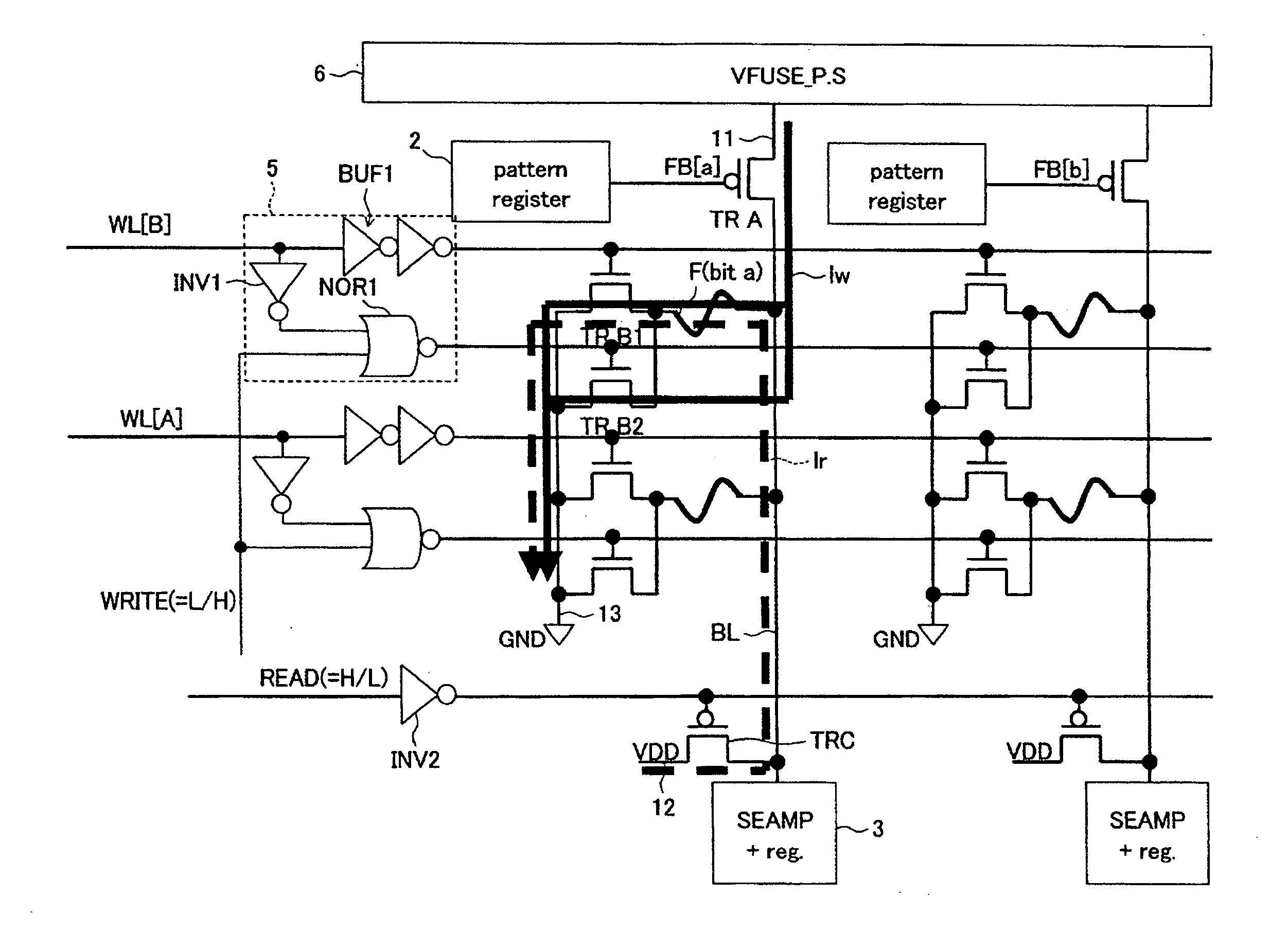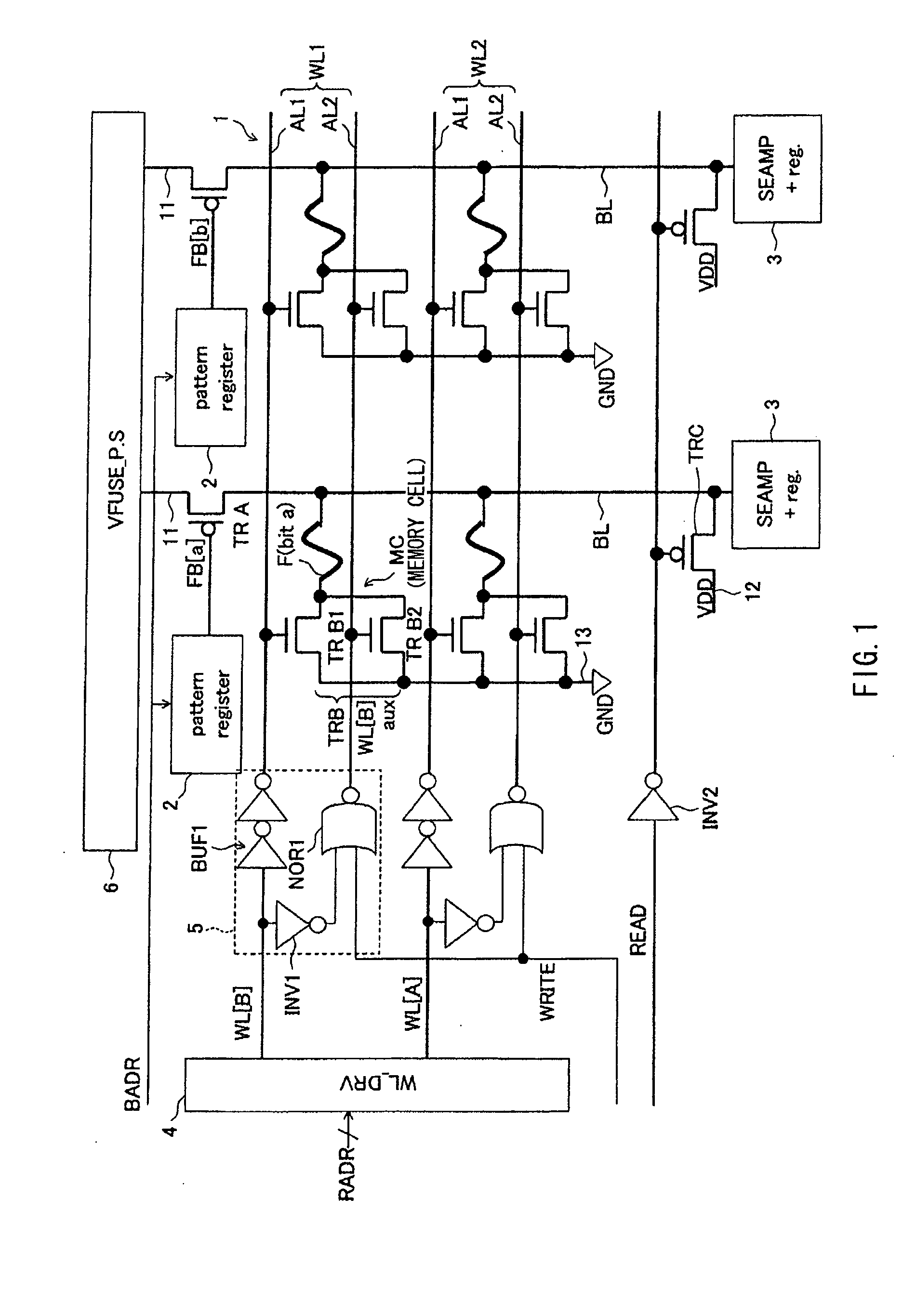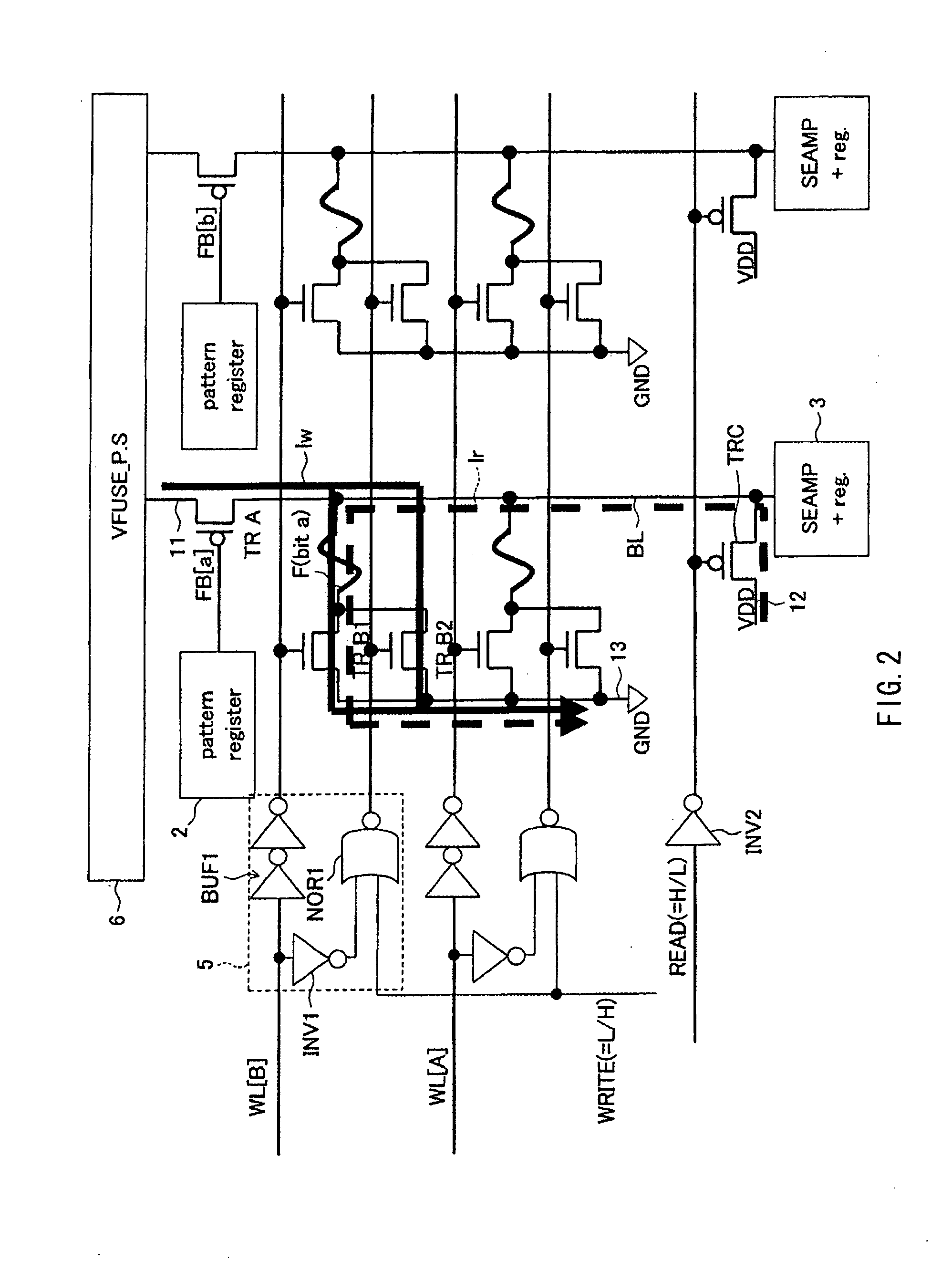Semiconductor device
- Summary
- Abstract
- Description
- Claims
- Application Information
AI Technical Summary
Benefits of technology
Problems solved by technology
Method used
Image
Examples
first embodiment
1. First Embodiment
Chip Configuration
[0026]FIG. 1 illustrates a chip configuration diagram of a semiconductor device according to the first embodiment. The semiconductor device of this embodiment includes a memory cell array 1 and various control circuits for controlling programming (writing) and reading of the memory cell array 1.
[0027]In the memory cell array 1, a plurality of memory cells MC are arranged in a matrix state. As described later, each of the memory cell MC is provided between a bit line BL and a third voltage supply line (GND line 13), and, for example, has a fuse device F and an access transistor TRB serially connected to the fuse device F. FIG. 1 exemplifies a case that four memory cells MC are arranged in two columns (2 bits)×2 rows. However, arrangement of the plurality of memory cells MC is not limited to the arrangement of FIG. 1, and for example, the plurality of memory cells MC may be arranged in one row. It is to be noted that, in the following description, ...
second embodiment
2. Second Embodiment
[0100]FIG. 4 illustrates a chip configuration diagram of a semiconductor device according to the second embodiment. Further, FIG. 5 illustrates a path of a current flown at the time of operation. A description will be given of difference between FIGS. 4 and 5 and FIGS. 1 and 2 according to the first embodiment. In FIGS. 4 and 5, descriptions of the elements affixed with the same referential numbers as those of FIGS. 1 and 2 will be omitted.
[0101]In this embodiment, the access transistor TRB is composed of three cell transistors, that is, the first cell transistor TRB1, the second cell transistor TRB2, and a third cell transistor TRB3. The first, the second, and the third cell transistors TRB1, TRB2, and TRB3 are each composed of an NMOS transistor, and are connected to each other in parallel.
[0102]In this embodiment, the first cell transistor TRB1 is a cell transistor that is constantly used (is turned ON) at the time of reading and at the time of programming (he...
PUM
 Login to View More
Login to View More Abstract
Description
Claims
Application Information
 Login to View More
Login to View More - R&D
- Intellectual Property
- Life Sciences
- Materials
- Tech Scout
- Unparalleled Data Quality
- Higher Quality Content
- 60% Fewer Hallucinations
Browse by: Latest US Patents, China's latest patents, Technical Efficacy Thesaurus, Application Domain, Technology Topic, Popular Technical Reports.
© 2025 PatSnap. All rights reserved.Legal|Privacy policy|Modern Slavery Act Transparency Statement|Sitemap|About US| Contact US: help@patsnap.com



